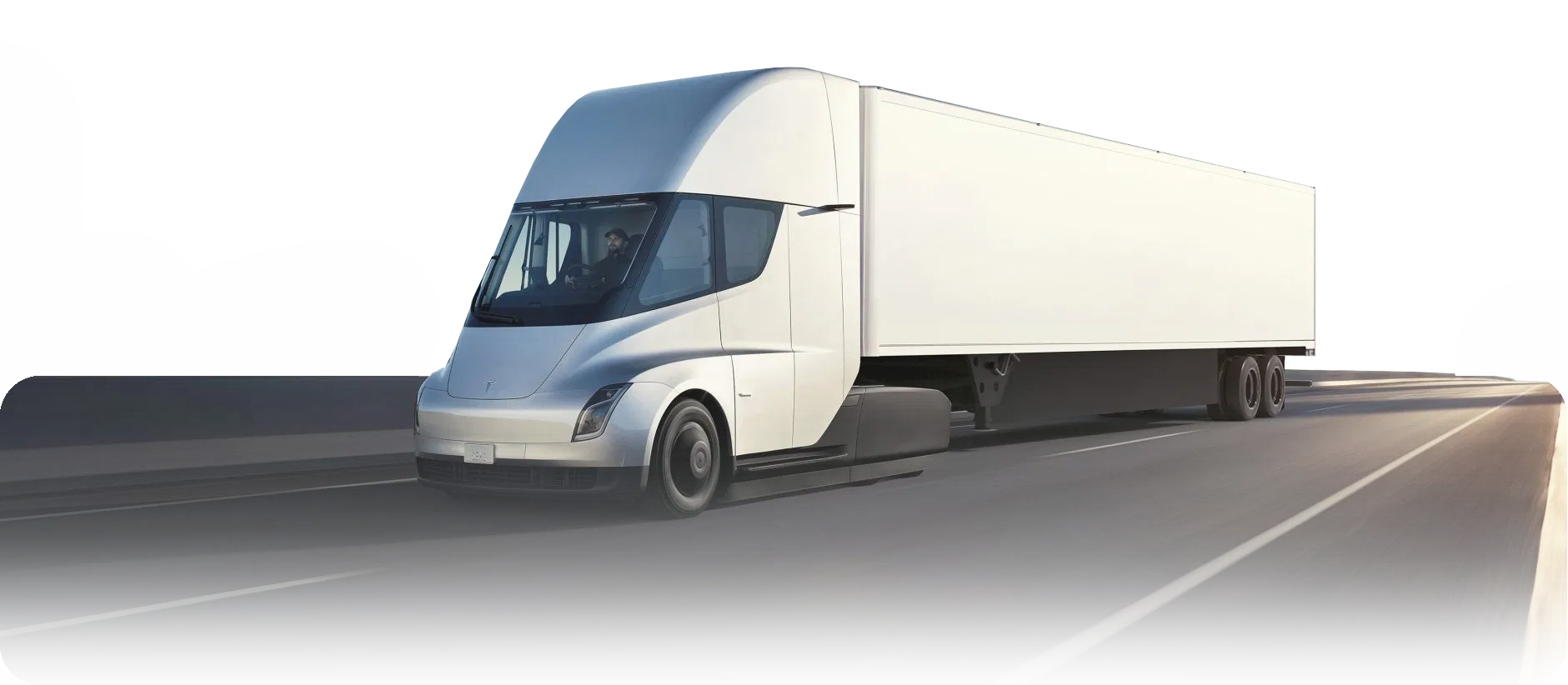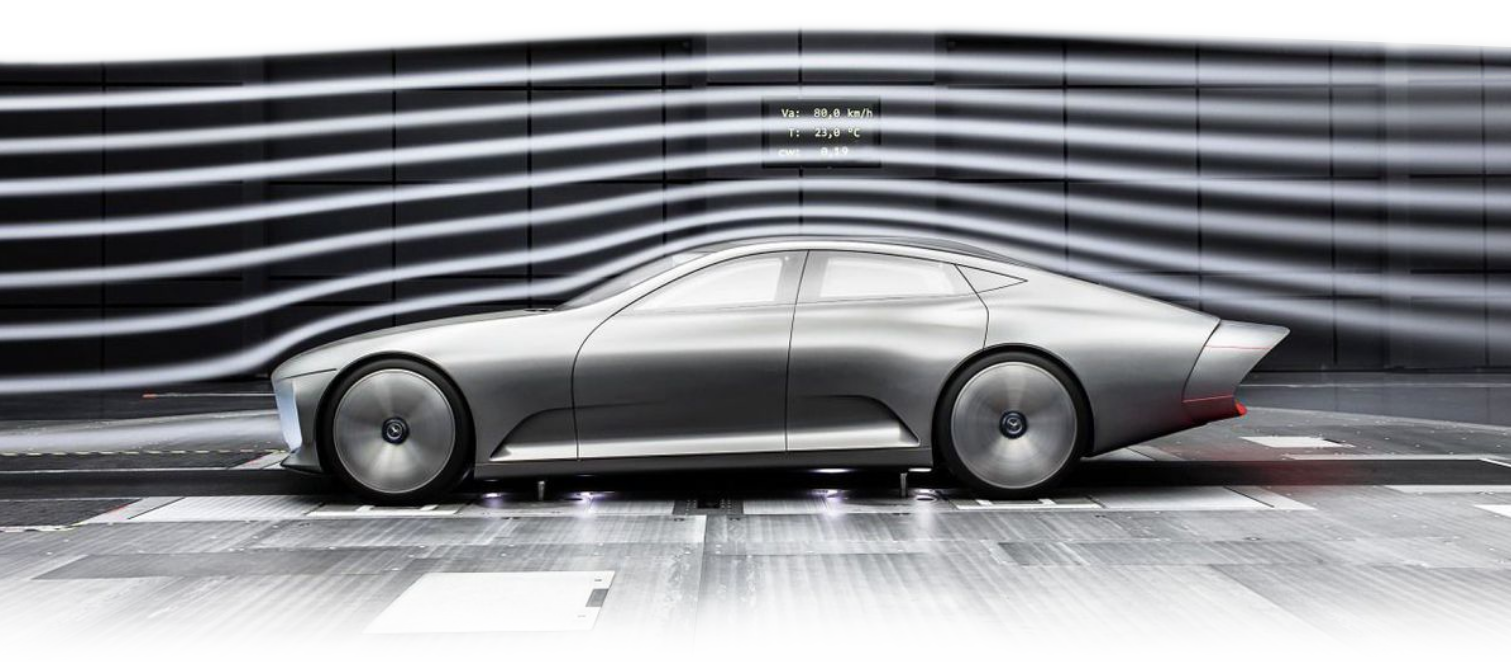I - Form #
Small Details Have Big Consequences in Aerodynamics. #

The Tesla Semi. Photo courtesy of Tesla Motors.
Introductory Thoughts #
Because air flow can’t (easily) be seen, newcomers are tempted to use mental models informed by the visible world to speculate on how it behaves. Unfortunately, this intuition often falls short.
Intuition vs. Reality #
Depicted below is how one would expect air to move around a sphere, with the flow behaving like individual particles that bounce off of the surface. This is known as a “bullet model”.

However, even with this basic flow, intuition is unreliable, as the bullet model is incorrect. The object does act as an obstacle, but fluids flow around things, and not at them. The fluid flows around the body because, in a sense, it has ‘advance warning’ that something is coming, so it reacts early and gets out of the way. Below is a more accurate depiction of the flow.

This distinction may seem obvious, but consider that even the father of modern mathematics and physics, Isaac Newton, incorrectly based his theories of aerodynamics on the bullet model.
Correcting this misconception is an important first step in calibrating an instinct for aerodynamics.
Types of Shapes #
At the most basic level, the same general flow pattern exists around all objects, but differences arise in the degree to which various geometries are receptive to the pattern.
Streamlined #
The streamlined shape represents the best case scenario in aerodynamics, as the fluid flows around it with minimal theater.
The following images are the output of CFD (computational fluid dynamics) simulations. They are an accurate depiction of how airflow behaves. Displayed are 2D cross-sections of 3D shapes.

| Point | Behavior |
|---|---|
| 1. | The fluid reacts to the presence of a body moving through it by diverging away from and around the bodies leading edge. |
| 2. | As the flow passes the widest dimension of the object, it begins converging as the flow tries to close behind the body. |
| 3. | Downstream of the object, the streamlines are approximately parallel again. From the streamlines alone, it’s difficult to tell an object has even passed through the fluid. |
Bluff #
Conversely, the bluff body represents the worst case scenario. The fluid is unable to close behind the shape. It does eventually, but far downstream.

| Point | Behavior |
|---|---|
| 1. | After diverging around the leading edge, the flow can’t follow its contour due to the sharp corners. |
| 2. | This causes the fluid to follow a much more roundabout path, increasing the effective obstruction the object poses to incoming flow. |
| 3. | Even though the body has a sharp trailing edge, the flow doesn’t ‘see’ it. |
Hybrid #
Shown below is an object that lies somewhere within the streamlined/bluff spectrum.

| Point | Behavior |
|---|---|
| 1. | The blunt trailing edge prevents the fluid from fully converging behind the object, leaving a pocket of unmoved air. |
| 2. | Downstream, the air remains disturbed but quickly begins to match the streamlined case. |
Why Does it Matter? #
The distinction between streamlined & bluff bodies becomes significant when assessing the drag force acting upon each shape. If the streamlined body is used as baseline, the size of the arrows signifies the relative drag force acting on each one:

| Shape | Drag |
|---|---|
| 1 | X Drag |
| 2 | 2X Drag |
| 3 | 10X Drag |
Described another way, as scaled, these two objects produce the same amount of drag.
Small differences in shape can massively impact performance.
Real World Applications #
Where does a car fall on the streamlined/bluff spectrum?

The automobile has exhibited bluff characteristics for much of its existence. In the past, the customer requirements (aesthetics, interior & cargo room, styling, powertrain packaging..etc) were not in line with the design direction needed to minimize drag. However, with evermore stringent regulations mandating higher fuel efficiency, many features of the streamlined body are now adopted by conventional automobiles.

E36 BMW 3-Series & Tesla Model 3.
| Point | Detail |
|---|---|
| 1. | Radiused leading edge. |
| 2. | Smooth underbody. |
| 3. | Gently tapered roof line. |
| 4. | Converging rear underbody. |
As a result of the increased attention to aerodynamics, modern road cars have impressively low drag coefficients compared to their counterparts from even just two decades ago.
| Car | Coefficient of Drag |
|---|---|
| 1986 BMW 3 Series | .33 |
| 2005 BMW 3 Series | .32 |
| 2012 BMW 3 Series | .27 |
| 2019 BMW 3 Series | .23 |
The drag coefficient quantifies the amount of resistance a given shape feels, with lower being better.
Going forward, auto manufacturers are experimenting with novel methods to incorporate even more features of the streamlined body into the automobile form. For example, the Mercedes Concept IAA has a deployable rear tail extension to further taper it’s trailing edge. This results in a flow field remarkably similar to that of the ideal streamlined shape.

Mercedes IAA Concept. Photo courtesy of Daimler Mercedes.
Concluding Thoughts #
In review, the same general flow pattern of divergence followed by convergence exists around all objects. However, there is a distinction between streamlined and bluff objects, classifications that fall on two opposite ends of the spectrum. Most real world geometries lie somewhere on that gradient, borrowing features from both.
This article speaks to how the flow generally behaves. Continue to Part II, where the discussion turns to the mechanisms by which a fluid can accumulate and deploy energy, which begins to answer the why.
For questions or clarifications on this, or any other article, reach out to Nav@WorksAero.com.
